August 2021 Edition

Delivering a station site at Fresno has launched, even amid the pandemic. The California High-Speed Rail Authority (Authority) began conducting virtual meetings with multiple Fresno stakeholders in the fall and winter of 2020. So far, the Authority has hosted virtual workshops and collected feedback from City of Fresno staff, metropolitan planning organizations, non-profit organizations, business associations, and community advocates. The intent is to gather local preferences and feedback about the future of Fresno’s High-Speed Rail station; the process is ongoing and the Authority welcomes input from all community members.
What We’ve Heard So Far
Stakeholders have highlighted the importance of appreciating Fresno’s treasured and unique culture in the course of station design.
The three key themes were:
- Encourage comfortable and quick pedestrian and bicycle connection between Downtown and Chinatown;
- Highlight Chinatown’s diversity and food culture; and
- Encourage many modes (transit, bikes, scooters, and walking) in the station area and ensure that parking is not a barrier to connectivity and access
In addition to providing responses to ideas about the station and access, stakeholders also provided suggestions for activities that could benefit the community before train service later this decade. Sites where “early activation” (or activities that deliver community benefits today) could occur were an important component of conversations to date. These early activities, many of which will be temporary, depend on local partnerships and community participation for successful implementation. Building activity in the short term helps us keep positive interest in and attention to our station site, builds economic activity (which depends on people), all of which feeds ridership to the system at the end of the decade.
Input continues to be important to us. Looking ahead in 2021, the Authority will advance station site planning and coordination in the Central Valley leading to initiation of design work for the station site facilities. We will be scheduling more stakeholder meetings: visit hsr.ca.gov/contact to sign up for our newsletter updates or contact us at central.valley@hsr.ca.gov.
Updates Per Project

CP 1: Road 27 Grade Separation
Work continues at the Road 27 Grade Separation in Madera County. On the north side of the structure, crews hauled more than 100,000 cubic yards of dirt to form the slope of the structure. At the most northern abutment, crews are working on joint sealing the abutment with concrete. Crews will then begin to pave the road with asphalt later this summer. When complete, the Road 27 Grade Separation will be 636-feet long, 43-feet wide and will take traffic and pedestrians over the existing BNSF and future high-speed rail lines.
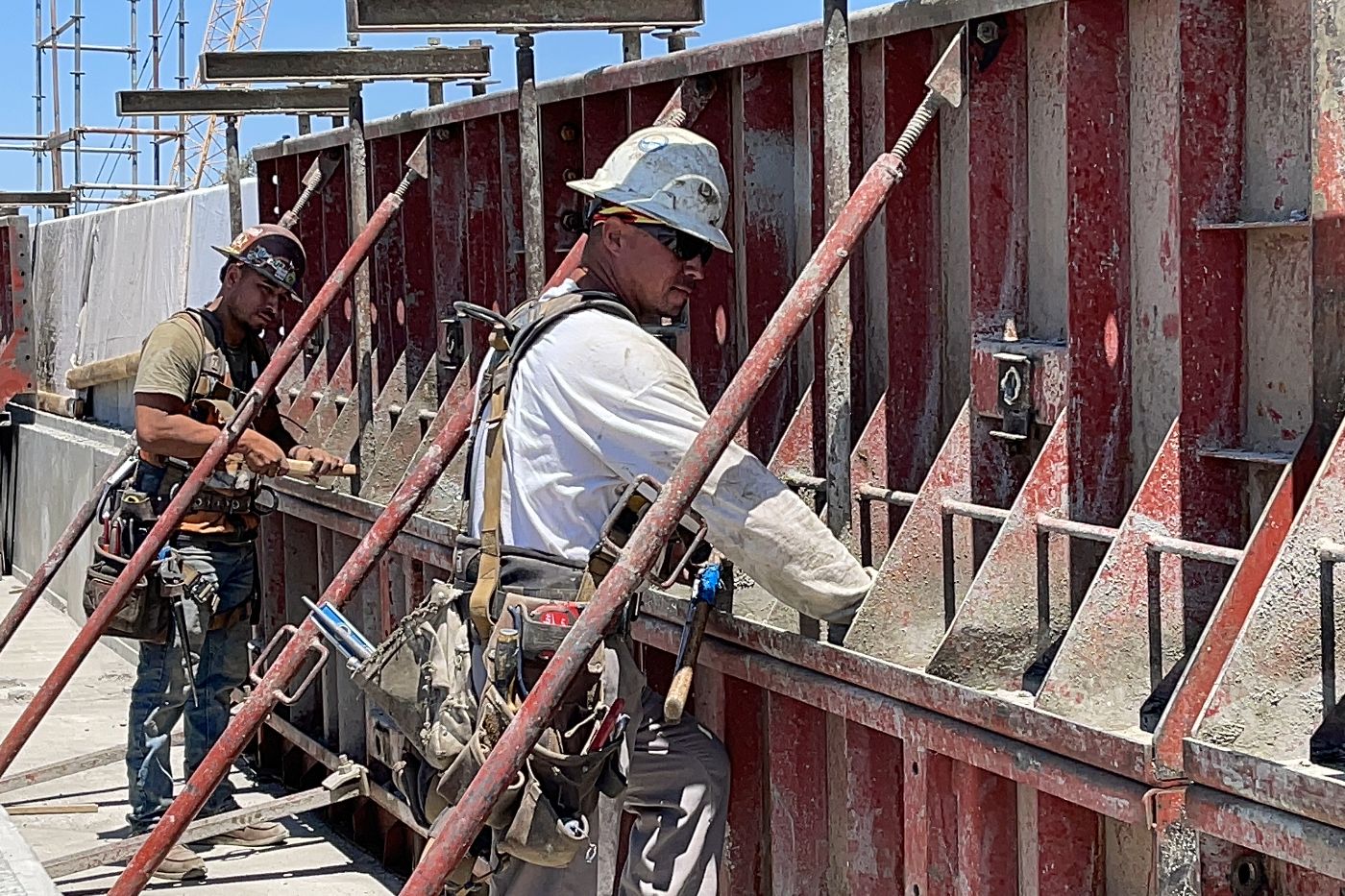
CP 1: Cedar Viaduct
At the Cedar Viaduct in Fresno County, crews are installing the metal pan decking across the superstructure spanning over State Route 99. To the south, crews are working on tying rebar and removing forms for the parapet – or safety barrier – on top of the structure. When complete, the Cedar Viaduct will span nearly 3,700 feet long and will carry high-speed trains over State Route 99, North Avenue, Cedar Avenue, and Golden State Boulevard.
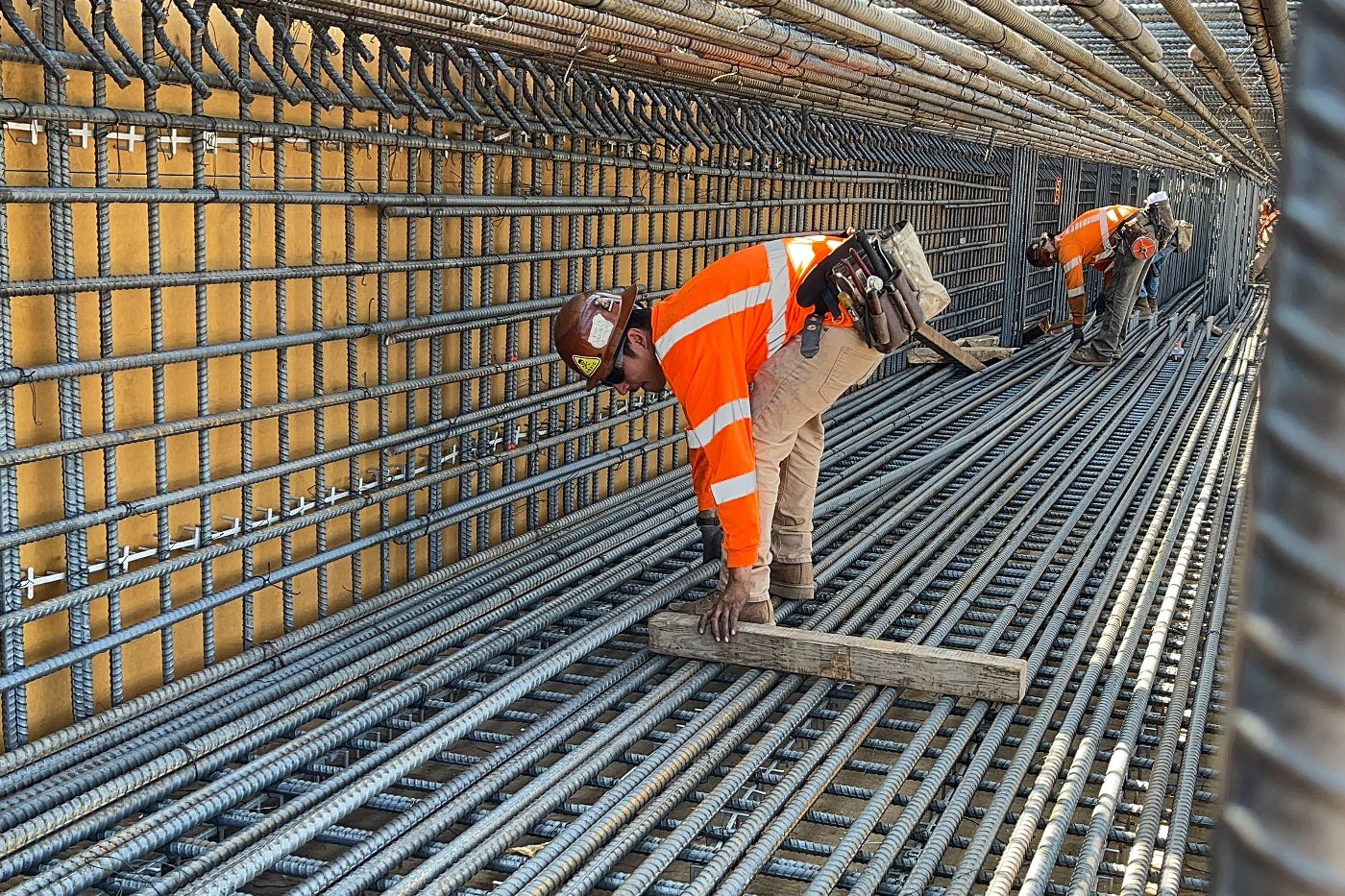
CP 2-3: Conejo Viaduct
At the Conejo Viaduct in Fresno County, crews are installing falsework for the edge beams of the superstructure, the portion of the structure that will carry high-speed trains over the BNSF tracks. To the south, ironworkers can be seen tying rebar for the lower edge beams where falsework has been installed. Ironworkers will continue to move north as falsework is installed.
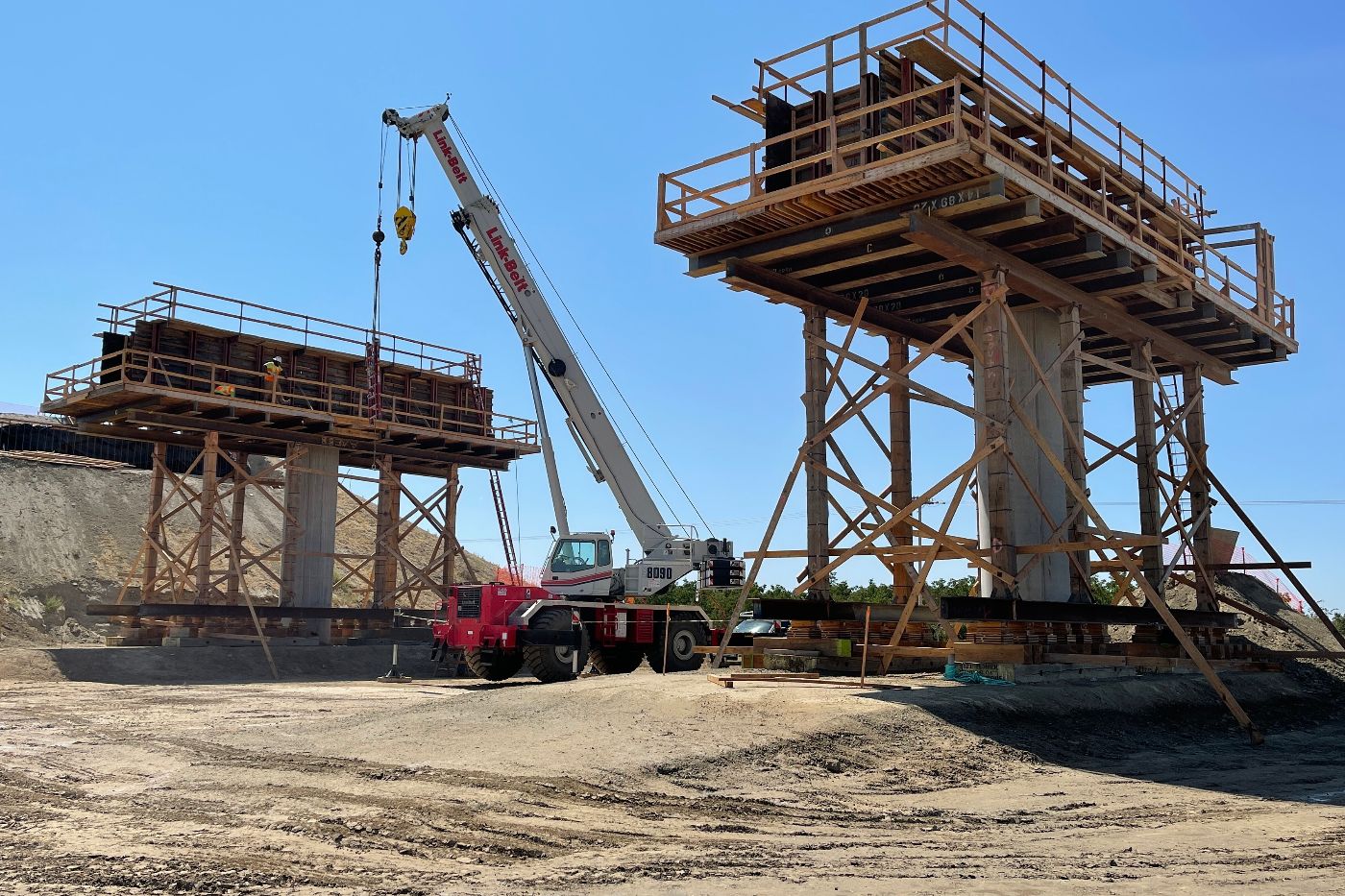
CP 2-3: Fargo Avenue Grade Separation
At Fargo Avenue in Kings County, crews can be seen working on the bent caps that sit atop the columns of the future grade separation. Crews have completed hauling dirt for the slope on the east side of the structure. When complete, Fargo Avenue will be realigned slightly north atop of the overcrossing and will take traffic over the future high-speed rail lines.
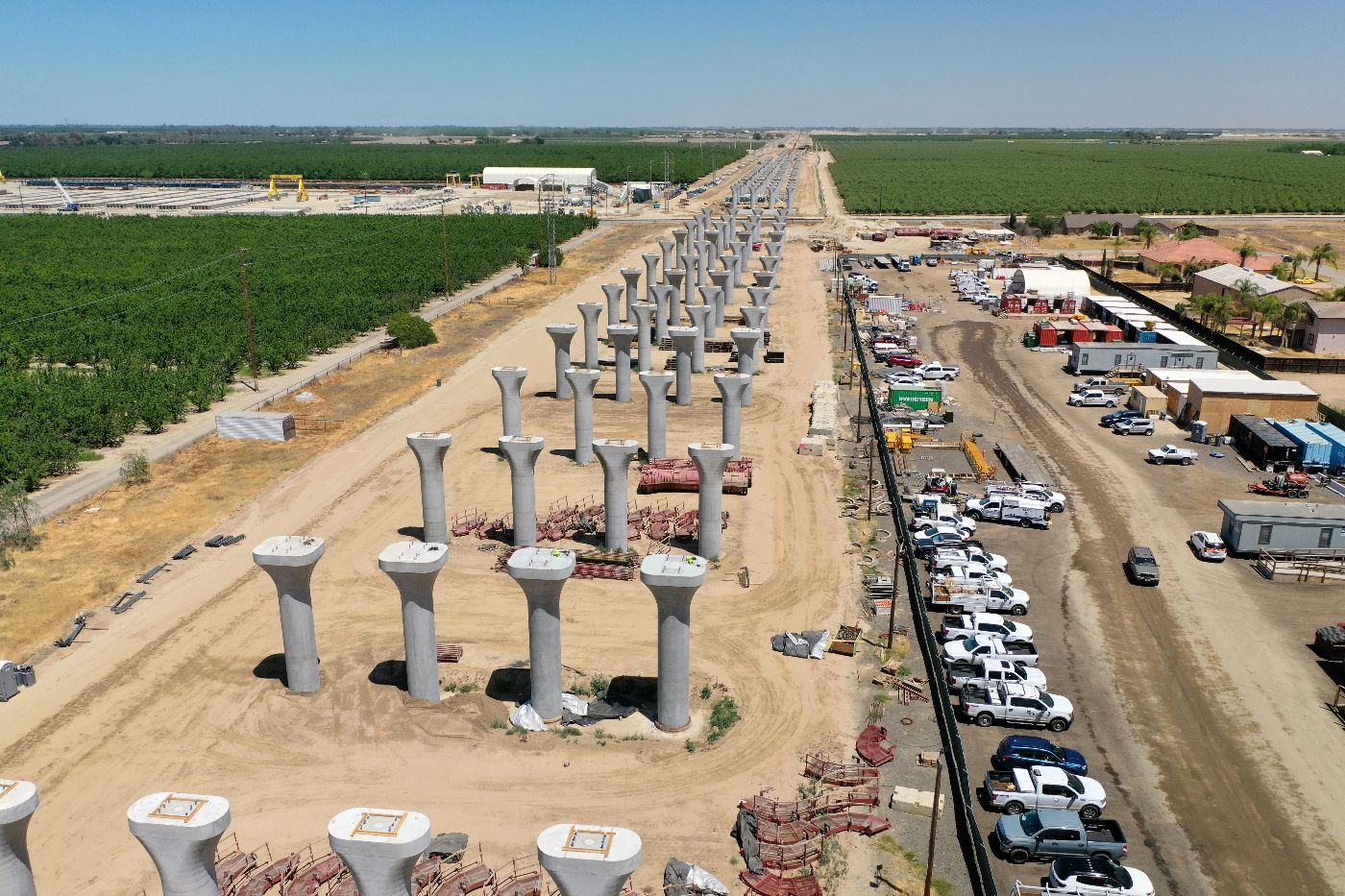
CP 2-3: Hanford Viaduct
At the Hanford Viaduct, crews are working on the abutments – the structure that connects the deck of the structure to the ground – at the most northern and southern portions of the structure. Going south, crews are nearly complete erecting 286 columns needed to form the substructure of the viaduct that will connect to the future Kings / Tulare Station. Hanford Viaduct is the largest high-speed rail structure in the Central Valley spanning nearly 6,330 feet long. When complete it will carry high-speed trains over Grangeville Boulevard, San Joaquin Valley Railroad, and State Route 198.
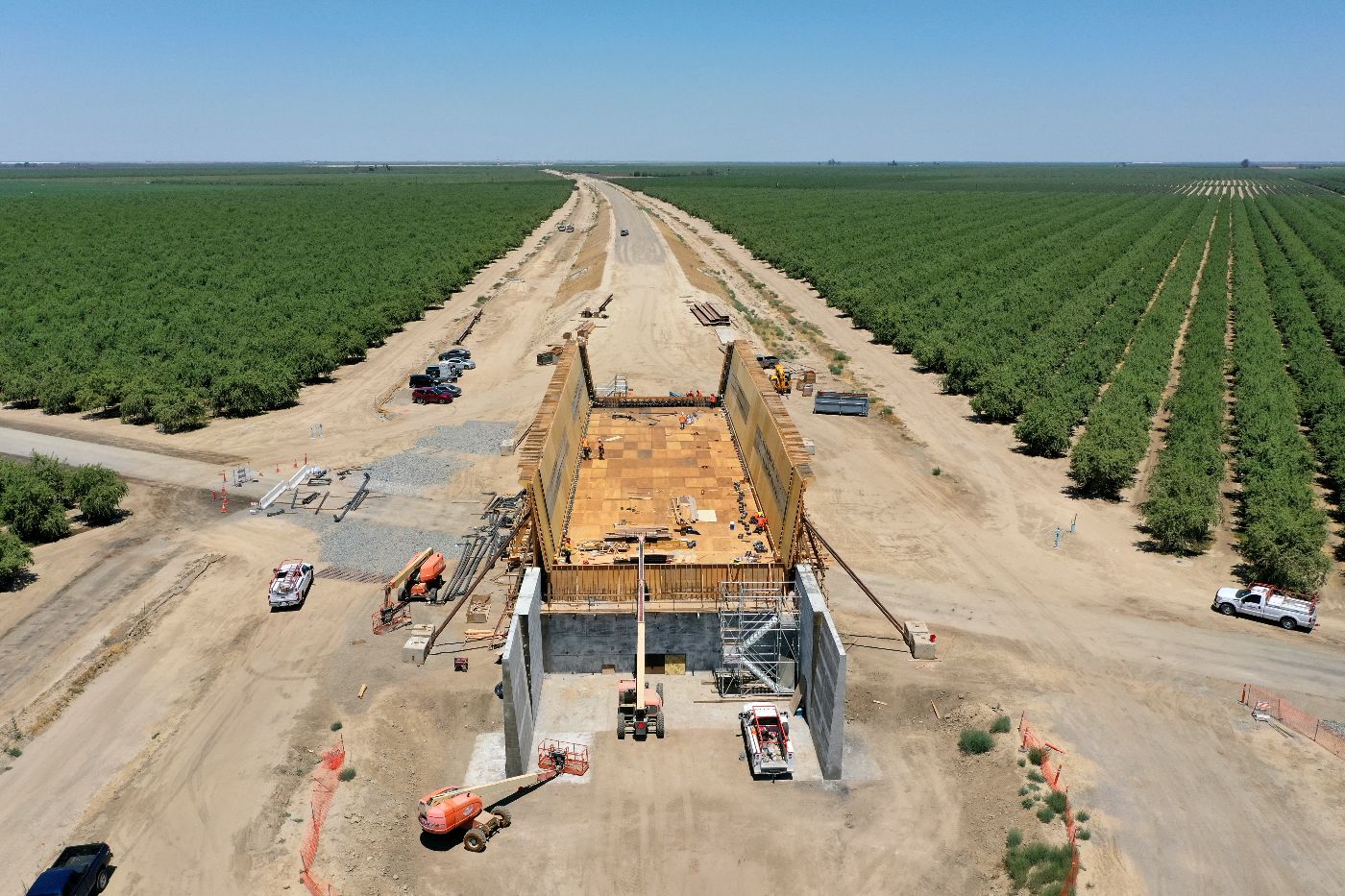
CP 4: Peterson Road Bridge
At Peterson Road in Kern County, crews are beginning work on the superstructure by installing forms for the girder walls. Bridge reinforcement and post tensioning apparatuses are also being set into the bridge structure to be stressed later this year. When complete, the structure will be more than 153-feet long, 52-feet wide and will take high-speed trains over Peterson Road.
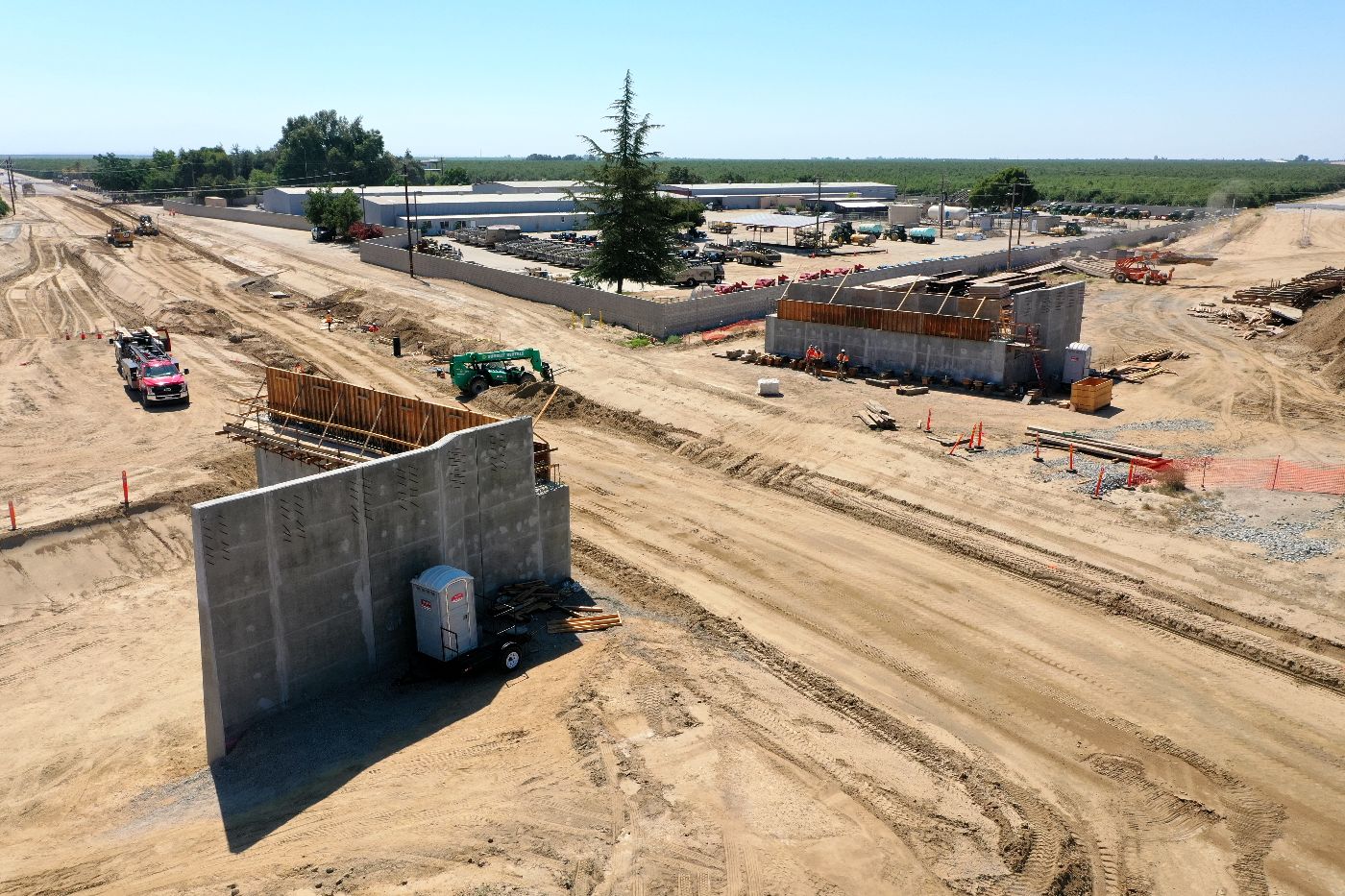
CP 4: Kimberlina Road Viaduct
Kimberlina Road is now closed between Shafter Avenue and State Route 43 in Kern County for work on the Kimberlina Viaduct. The abutment walls are up and crews are now preparing to begin work on the superstructure that will carry high-speed trains over Kimberlina Road. When complete, the viaduct will span 110-feet long.